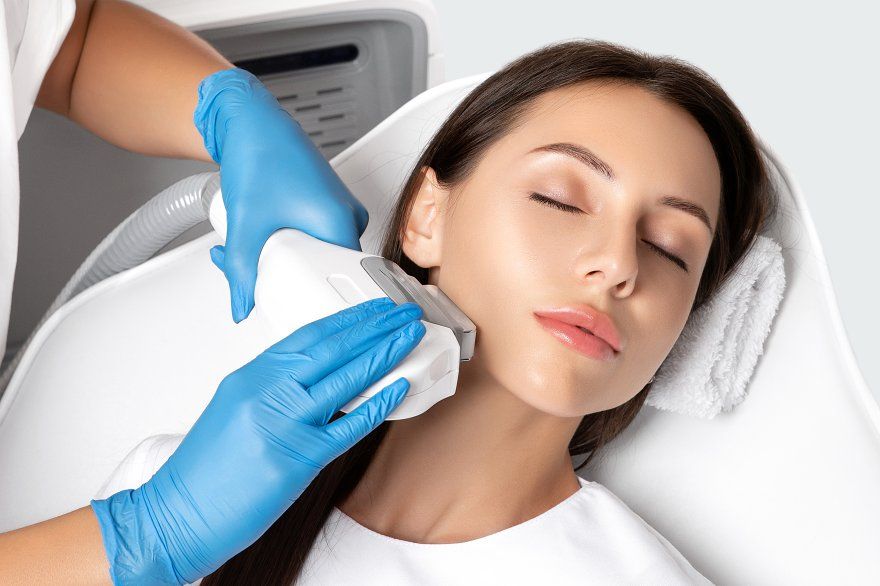Skin pigmentation issues can be a source of frustration for many individuals seeking a clear and even complexion. From hyperpigmentation to melasma, these conditions arise due to various factors, including sun exposure, hormonal fluctuations, and skin injuries. Understanding the available solutions is crucial for those seeking effective methods for pigmentation removal. In this article, we’ll explore advanced techniques for pigmentation removal that can help restore skin vitality and enhance beauty. Armed with the right knowledge, you can make informed decisions regarding the best approaches for your unique skin type. Let’s delve into the intricacies of skin pigmentation, traditional methods, and groundbreaking treatments that promise noticeable results.

Understanding Skin Pigmentation
Skin pigmentation refers to the coloring of the skin produced by a pigment called melanin. Melanin not only determines the color of our skin but also plays a crucial role in protecting it from harmful UV rays. There are several types of pigmentation issues that individuals may face, primarily hyperpigmentation and melasma. Hyperpigmentation occurs when certain areas of the skin become darker due to an excess of melanin. In contrast, melasma is characterized by brown or gray-brown patches, often linked to hormonal changes during pregnancy or hormonal therapies.
Causes of Pigmentation
The causes of pigmentation are multifaceted and vary among individuals. Here are some of the most common culprits:
- Sun exposure: Prolonged exposure to the sun can lead to an overproduction of melanin, causing dark spots and uneven skin tone.
- Hormonal changes: Fluctuations in hormones, particularly in women, can trigger pigmentation changes, commonly observed during pregnancy or with contraceptive use.
- Genetics: Family history can predispose individuals to conditions like freckles or melasma.
- Skin injuries and inflammation: Physical trauma or irritations can result in post-inflammatory hyperpigmentation.

Traditional Methods of Pigmentation Removal
Topical treatments remain a popular option for those battling pigmentation issues. Common active ingredients include hydroquinone, which lightens skin by inhibiting melanin production, and retinoids, which promote cell turnover. Vitamin C serums are also effective, offering antioxidant protection while brightening the skin. While these methods can be effective for mild cases, they often require consistent application over an extended period, and results may take weeks to manifest.
Chemical Peels
Chemical peels offer a more intensive approach to pigmentation removal by applying a chemical solution to exfoliate layers of skin. There are various types of peels, including AHA (alpha hydroxy acid), BHA (beta hydroxy acid), and TCA (trichloroacetic acid). Each type varies in strength and depth of penetration, thus offering different degrees of exfoliation. The healing process can lead to smoother, more uniform skin, but it’s essential to understand that multiple sessions may be required for desired results.
Laser Treatments
Laser treatments have gained traction as an effective method for addressing pigmentation concerns. Using concentrated light beams, different types of lasers target specific pigmentation while preserving surrounding skin. Popular laser options include Q-switched lasers and fractional lasers, which help break down excess melanin. While results can be impressive, it’s crucial to have a professional consultation to determine suitability based on skin type and pigmentation severity.

Advanced Techniques for Pigmentation Removal
Microneedling, often combined with targeted serums, is a revolutionary technique for promoting skin regeneration. Tiny needles create micro-injuries that stimulate collagen and elastin production, resulting in rejuvenated skin texture. When used alongside serums designed for pigmentation removal, such as those containing vitamin C or niacinamide, this technique enhances the effectiveness of the ingredients, leading to improved skin tone. The procedure has minimal downtime and can be tailored to suit individual skin concerns.
IPL (Intense Pulsed Light) Therapy
IPL therapy is another noteworthy option for individuals exploring advanced pigmentation removal. This technique uses a broad spectrum of light to target melanin in the skin, effectively breaking it down and resulting in a more even skin tone. Comparing IPL with traditional laser treatments, it is often less intense and suitable for various skin types. Results can be seen after a few sessions, making it a popular choice for those seeking prompt improvements.
Cryotherapy for Pigmentation
Cryotherapy involves applying extreme cold to target specific pigmentation spots, effectively freezing and damaging the excess pigment. This method is precise, making it suitable for isolated areas such as age spots or freckles. As the treated tissue heals, the pigmentation gradually fades. Depending on the individual’s skin type and the area treated, cryotherapy can be a quick and effective solution for pigmentation removal.
Platelet-Rich Plasma (PRP) Treatments
Platelet-rich plasma (PRP) therapy has emerged as a sophisticated option for skin rejuvenation, including pigmentation issues. This technique involves extracting a small amount of the patient’s blood to isolate platelets, which are then reintroduced to the skin. The growth factors present in PRP stimulate healing and the production of new skin cells, addressing pigmentation at its source. It’s a natural approach that not only brightens the skin but also promotes a youthful appearance.
Natural and Holistic Approaches
Aside from clinical treatments, natural and holistic methods can also support pigmentation removal. Herbal remedies, like turmeric and licorice root, possess properties that can lighten skin over time. Additionally, maintaining a balanced diet rich in antioxidants can further promote skin health. Simple lifestyle changes, such as practicing sun protection and an effective skincare routine, are indispensable in any pigmentation strategy.

Choosing the Right Treatment for You
Selecting the appropriate treatment for pigmentation removal depends on several factors. Firstly, your skin type and sensitivity play a pivotal role in determining which techniques may be suitable. Secondly, the severity of pigmentation can guide your decision; mild cases may respond well to topical treatments, while more pronounced issues might require advanced techniques. It is advisable to consult with a dermatologist who can offer personalized recommendations based on your circumstances.
Setting Realistic Expectations
When considering pigmentation removal, setting realistic expectations is essential. Results vary depending on the selected treatment, individual skin conditions, and consistency in following the prescribed protocol. While some individuals may notice immediate changes, others may require several sessions for significant improvement. Ongoing maintenance treatments are often crucial to prolong results and prevent the recurrence of pigmentation.

Comparison Table of Pigmentation Removal Techniques
Here’s a brief comparison of various pigmentation removal techniques:
| Technique | Effectiveness | Downtime | Skin Types |
|---|---|---|---|
| Microneedling | Moderate to High | Minimal | All Skin Types |
| IPL Therapy | Moderate | Minimal | Light to Medium Skin |
| Cryotherapy | High | Minimal | All Skin Types |
| PRP Treatments | High | Minimal | All Skin Types |
| Chemical Peels | Moderate to High | Varies | Depends on Peel Type |
Conclusion
Exploring advanced techniques for pigmentation removal reveals a variety of options that cater to different skin types and concerns. From innovative methods like microneedling to established treatments such as chemical peels, individuals have numerous avenues to achieve a more radiant complexion. It is essential to approach pigmentation removal with informed choices and realistic expectations. Always consult a qualified dermatologist to tailor treatments to your unique skin needs. Taking proactive steps can lead to a journey where clear, even-toned skin becomes a reality.
FAQs
A1: The most common cause of skin pigmentation is sun exposure, which stimulates the production of melanin in the skin.
Q2: How long does it take to see results from pigmentation treatments?
A2: Results can vary based on treatment type and individual skin conditions, but most notice improvements within 4 to 12 weeks.
Q3: Are advanced pigmentation removal techniques safe for all skin types?
A3: Not all techniques are suitable for every skin type; consulting with a dermatologist is crucial for finding the best option for your skin.
Q4: Can pigmentation return after treatment?
A4: Yes, pigmentation can return due to many factors, including sun exposure, hormonal changes, or skin trauma, making ongoing care important.
Q5: What role does diet play in managing skin pigmentation?
A5: A healthy diet rich in antioxidants and vitamins can support skin health and reduce pigmentation by promoting regeneration.




